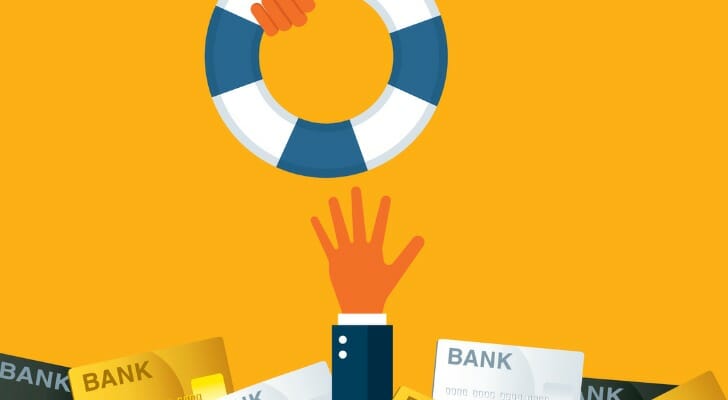

Great news! The Small Business Administration (SBA) has reopened the Economic Injury Disaster Loan (EIDL) program to all small businesses affected by the coronavirus pandemic.
Long before the coronavirus business interruption, the EIDL program was providing financial support to small businesses and private non-profit organizations that encountered certain declared disasters. But the Coronavirus Aid, Relief, and Economic Security (CARES) Act expanded the program to make it easier for borrowers affected by COVID-19 fallout to get a loan – and the interim stimulus bill replenished the program’s depleted coffers with $60 billion in additional funding. (The CARES Act also authorized advances of up to $10,000 that do not have to be paid back, making them grants. These advances, however, are no longer available, as the SBA has given out all $20 billion as of July 11. We will update this article if Congress approves more money for advances.)
EIDL applications are processed on a first-come, first-served basis. (As of August 15th, more than $184 billion has been approved for loans.) If you haven’t applied yet, you’ll need to submit your applications directly to the SBA. Also, you may be eligible for other aid programs. Check out our guide to business relief and state-by-state guides to relief programs. Now may also be a good time to talk to a financial advisor.
An EIDL is a loan of up to $2 million (though the New York Times reported that the SBA is unofficially capping the amount at $150,000 due to the high volume of applications it has received). With a maturity of up to 30 years, EIDLs are designed to help carry businesses through tough times caused by a disaster, such as the COVID-19 pandemic. These funds are intended to cover payroll and other operating expenses that the business could have otherwise met in a non-disaster economy. Funds cannot be used for refinancing, making loan payments on other federal debts, to repair physical damages, to pay IRS tax penalties or to pay out dividends.
Specific loan amounts depend on the amount of economic injury that a business has suffered. This amount is determined by the SBA on a case-by-case basis after a business applies. That said, the SBA announced in April that due to the surge of applications, it is limiting disbursements to $15,000 for two months – and it is reportedly capping total loan amounts at $150,000.
The interest rate on EIDLs is 3.75% for companies and 2.75% for nonprofits. Principal and interest payments of EIDLs are automatically deferred for one year, while the loan term can be for up to 30 years. Typically, EIDLs are available to businesses and private nonprofits.
Update: as noted earlier, the program for EIDL advances/grants is closed as of July 11. The SBA has given out all $20 billion authorized for the program.
The interim bill included another $10 billion for the SBA to provide businesses with quickly accessible advances of $10,000. For businesses that use these funds to help pay for paid leave, payroll, COVID-19 related costs, the advance became a grant. These advances, when they were available, were limited to $1,000 per employee, meaning you needed at least 10 employees to receive the full $10,000 advance.
Emergency EIDL grants were available within three days of submitting an application to the SBA.
Grants can be used by small businesses for a number of purposes. These include providing paid sick leave, payroll, meeting production costs, paying rent or mortgages on business spaces and anything else to help with the continuity of the business.
In order to be eligible, companies had to have been in business by Jan. 31, 2020. These grants were available to all businesses and organizations that are eligible for EIDLs.

In the past, EIDLs have been available only to small businesses and private nonprofit organizations. They are also accessible on a solely case-by-case basis to businesses affected by more specific business disasters in a particular state or city.
Thanks to the CARES Act, EIDLs are now available to small businesses with 500 employees or less, nonprofits, tribal businesses, cooperatives, employee stock ownership plans (ESOPs), sole proprietors and independent contractors. The new bill adds farmers and ranchers whose enterprises employ 500 or fewer people.
There are some specific things that may disqualify a business for EIDL eligibility. Applicants will be turned away if they:
Applying for an EIDL is quite straightforward. You’ll need to visit the SBA website first and note what type of business you’re operating. You then need to verify that you aren’t disqualified for a loan based on the eligibility criteria above.
Following this, applicants must compile and enter basic information about their business, such as operating expenses, revenue, business names, contact information and employee information. You’ll then note whether you’d like to receive a grant (when the program was open), along with listing your bank account details. The SBA typically takes 18 to 21 days to process the loan and then two to five days to disburse the funds.
The CARES Act was signed into law on March 27. This bill provides economic stimulus in multiple ways, including for EIDLs. The program quickly ran out of its original allocation and received another cash infusion of $60 billion.
The EIDL program has been expanded to be available to more kinds of businesses. It also provided cash advances up to $10,000 that are forgivable. (We’ll update this article if Congress authorizes more funds for advances/grants.)
The Paycheck Protection Program (PPP) has a total $659 in funding allocated by the last two stimulus bills. The program provides eligible businesses, sole proprietors, independent contractors and self-employed individuals with potentially forgivable loans of 2.5 times their average monthly payroll costs (excluding compensation in excess of $100,000 per employee), up to $10 million.
The PPP will forgive businesses up to eight weeks’ worth of its payroll costs. It will also forgive eight weeks of non-payroll costs (i.e., rent, mortgage interest and utilities), up to 40% of the loan amount. Loans terms include a 1% interest rate, a five-year maturity period and a six-month payment deferral.
The PPP ties into the EIDL program because businesses and organizations that received EIDLs between January 31, 2020 and April 3, 2020 have the option to refinance their EIDL into a PPP loan if they used the EIDL to cover payroll costs. If the business received an EIDL grant, that amount would be subtracted from the forgiven PPP loan amount. The new deadline for PPP loans is August 8.

Economic Injury Disaster Loans, or EIDLs, are meant to help businesses and organizations get through any type of economic crisis or disaster. The low-interest loan enables businesses to continue functioning as they weather an economic storm.
In the case of the coronavirus pandemic, the EIDL program has been expanded. EIDL advances, which can become grants, along with the ability for borrowers to refinance their EIDLs into PPP loans, seek to help small businesses keep their doors open and employees on their payroll.
Photo credit: ©iStock.com/10255185_880, ©iStock.com/sorbetto, ©iStock.com/shutter_m
Sam Lipscomb, CEPF®Sam Lipscomb is a writer for SmartAsset. His work spans a wide variety of personal finance topics with expertise including retirement and investment. He is particularly well versed in credit cards. Sam has been featured in The Economist and on The Points Guy. He is a Certified Educator in Personal Finance (CEPF®). Sam graduated from Kenyon College with a degree in Economics and enjoys being a go-to resource for family and friends when it comes to personal finance. Originally from Washington, DC, Sam loves all things aviation and is a Cleveland sports fan. He currently lives in New York.
Read More About Financial Advisor



More from SmartAsset
SmartAsset Advisors, LLC ("SmartAsset"), a wholly owned subsidiary of Financial Insight Technology, is registered with the U.S. Securities and Exchange Commission as an investment adviser. SmartAsset's services are limited to referring users to third party advisers registered or chartered as fiduciaries ("Adviser(s)") with a regulatory body in the United States that have elected to participate in our matching platform based on information gathered from users through our online questionnaire. SmartAsset receives compensation from Advisers for our services. SmartAsset does not review the ongoing performance of any Adviser, participate in the management of any user's account by an Adviser or provide advice regarding specific investments.
We do not manage client funds or hold custody of assets, we help users connect with relevant financial advisors.
This is not an offer to buy or sell any security or interest. All investing involves risk, including loss of principal. Working with an adviser may come with potential downsides such as payment of fees (which will reduce returns). There are no guarantees that working with an adviser will yield positive returns. The existence of a fiduciary duty does not prevent the rise of potential conflicts of interest.